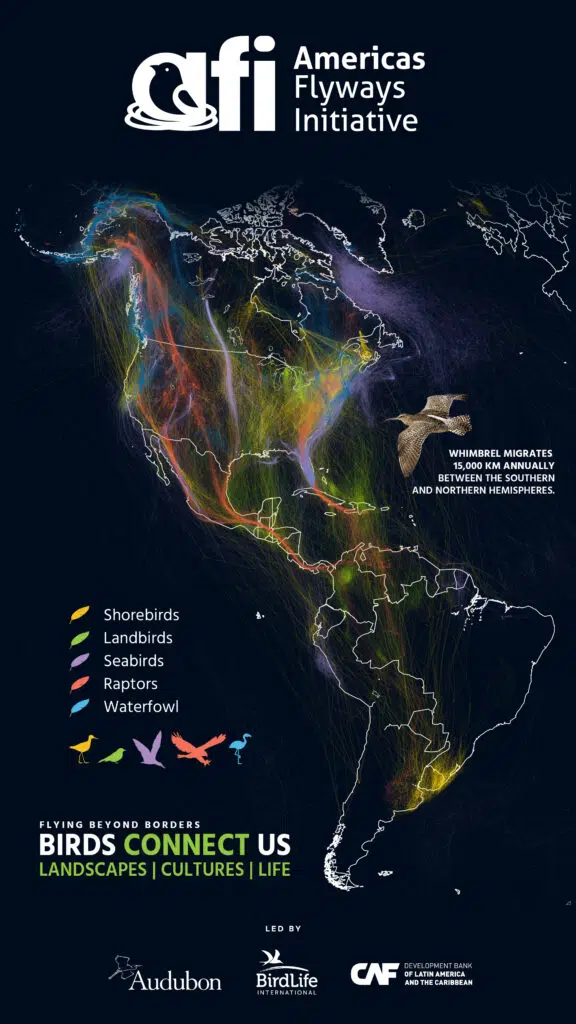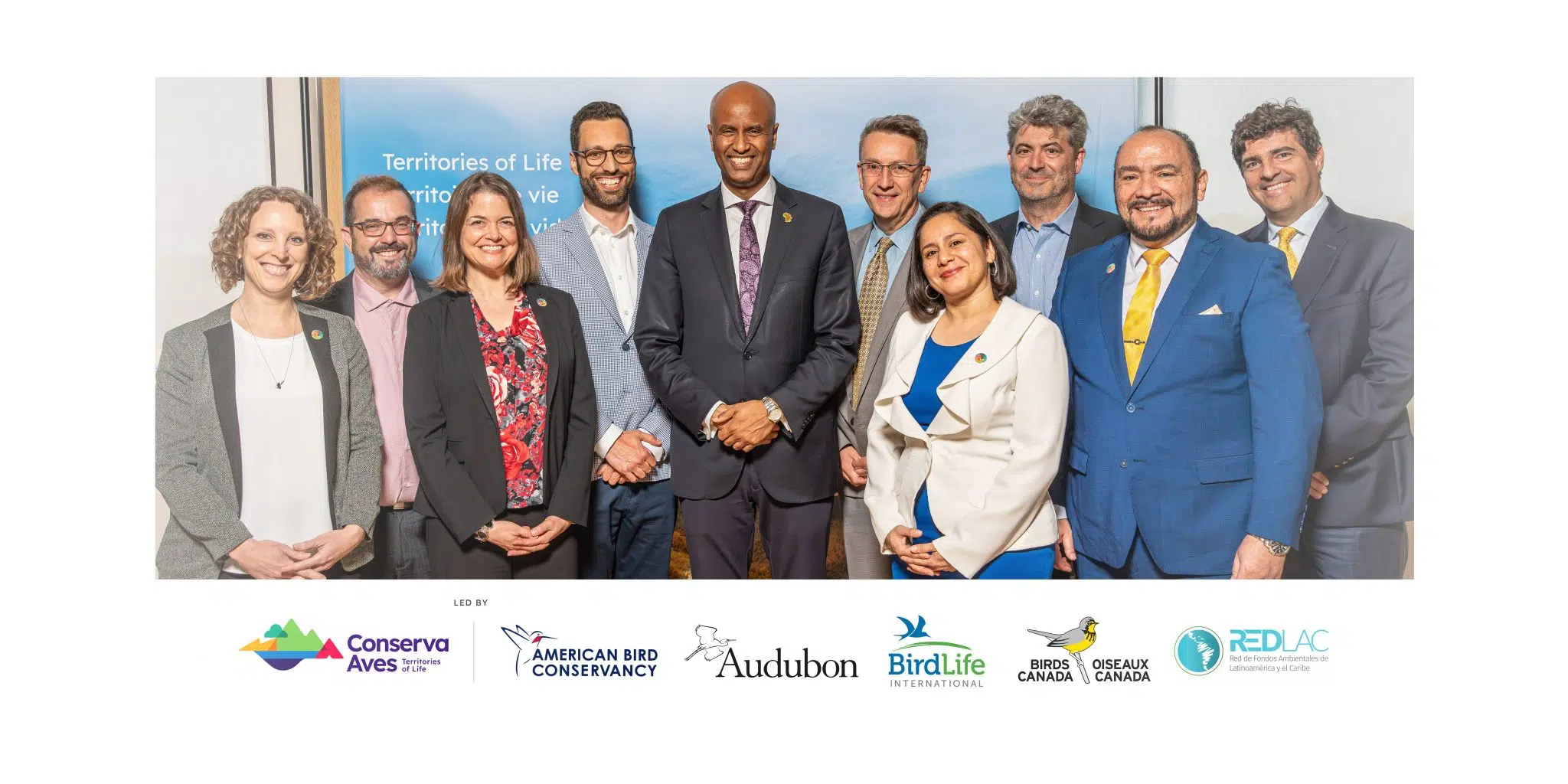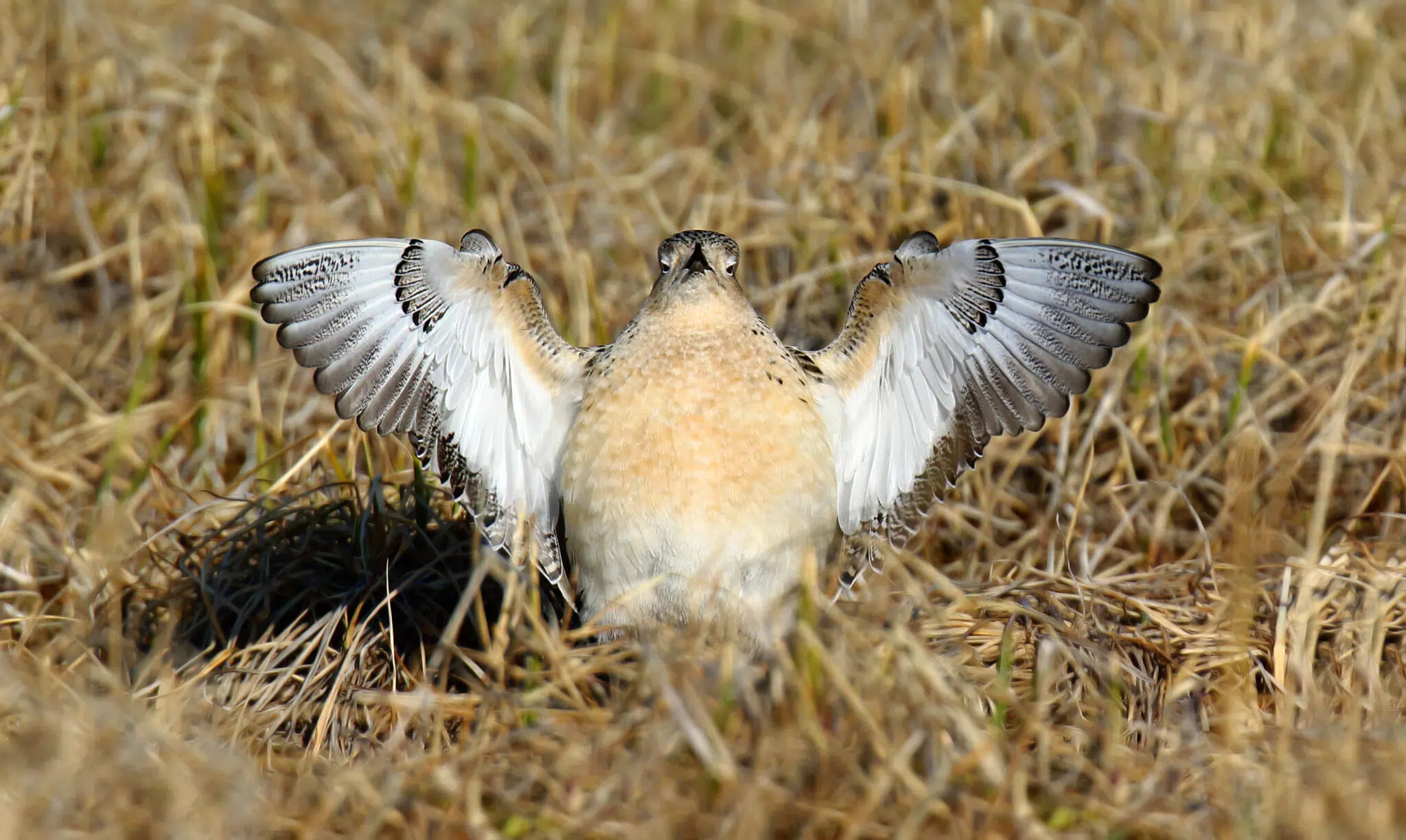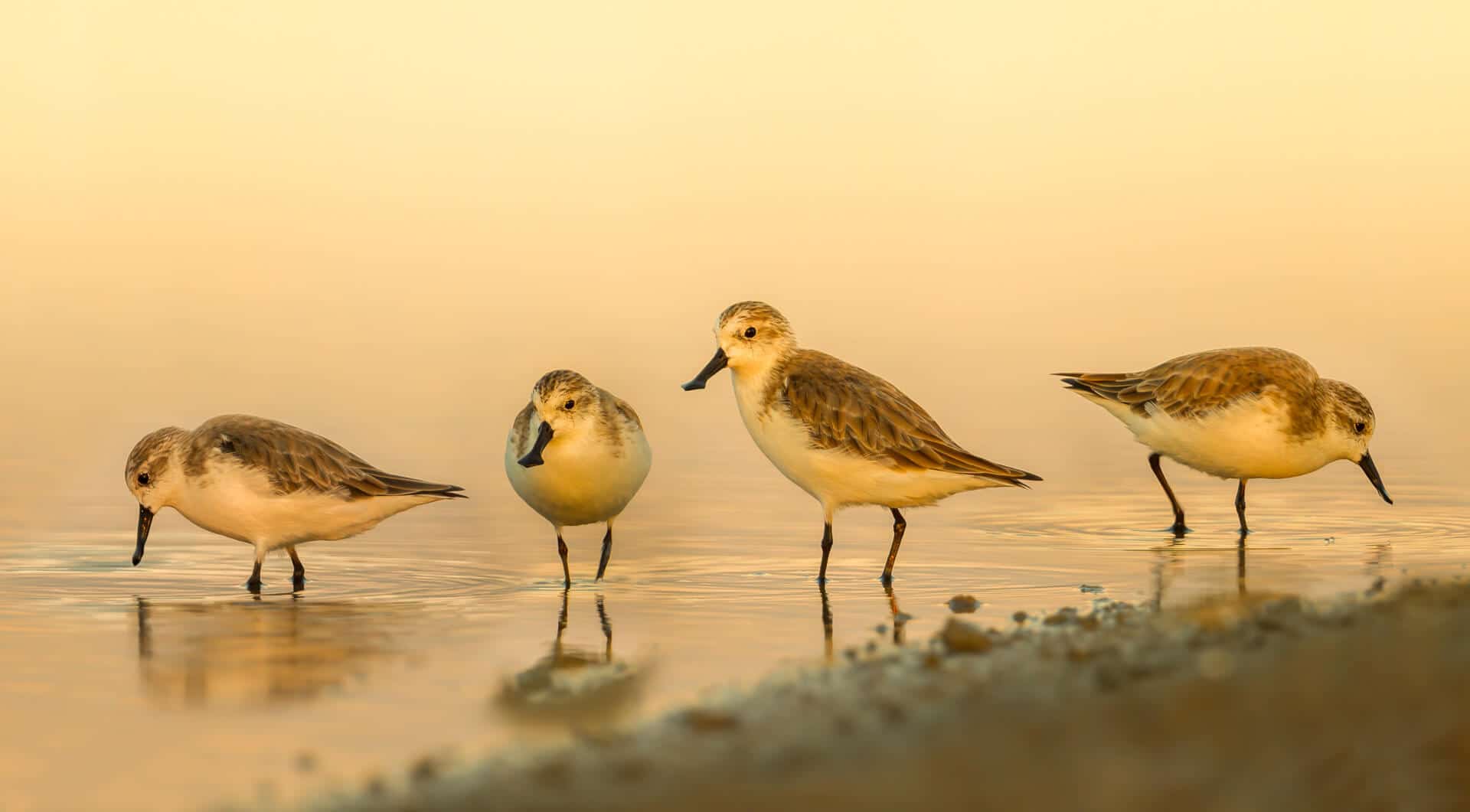The Americas Flyways Initiative launches, investing billions to save birds, landscapes and livelihoods
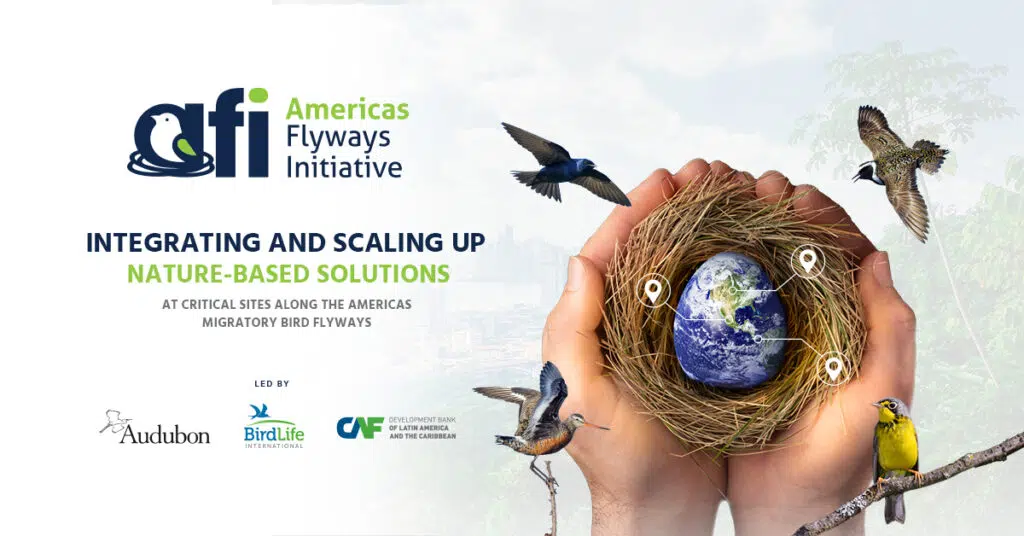
The Americas Flyways Initiative (AFI) was officially presented at The Climate Week in New York as a cohesive and relevant opportunity for synergy, integration, and harmonious coexistence that unites people and nature beyond borders, seeking healthy and prosperous environments.
The Americas Flyway Initiative (AFI) is a hemispheric, innovative, and visionary approach led by The National Audubon Society, BirdLife International, and the Development Bank of Latin America and the Caribbean (CAF) to protect, conserve, and restore nature and address the biodiversity loss and climate change crisis across the Americas.
After ten months of evolving from concept to action, AFI was officially presented at The Climate Week in New York as a cohesive and relevant opportunity for synergy, integration, and harmonious coexistence that unites people and nature beyond borders, seeking healthy and prosperous environments.
AFI is building a portfolio for transformative high-level projects to make the most significant economic investment in the Americas focused on sustainable development projects to benefit local communities and the planet’s welfare and safeguard a crucial ecosystem network for migratory and endemic threatened resident birds throughout the Western Hemisphere. Critical sites on the Pacific Coast of Ecuador and Chile are already being piloted.
“This is a unique and impactful approach that addresses climate change by using market-based solutions, effectively integrating the benefits of nature-based activity with major economic development projects.”
Elizabeth Gray, National Audubon Society CEO.
The ambition is to identify over thirty critical landscapes and seascapes along the Americas flyways for urgent conservation, restoration, and management by local partners, communities, and indigenous peoples. America’s flyways cover North, Central, and South America and the Caribbean, extending across 35 countries, from the Arctic Circle in the north to Tierra del Fuego in the south.
“We’ve got to find new creative ways to do things differently, to be bold, to be courageous, to form more collaborations […] And that is what the America’s Flyway Initiative is all about […] We must try wherever we can to raise awareness about the wonder of migratory birds and the importance of the places where they live. Because if people are aware, they’re more likely to care, and if they care, they are more likely to act […] So, to preserve these incredible places, to preserve the wonder of migrations, preserve our migratory species, to ensure that the people who call these places home, we have to think and act very, very differently. We have to be bold. We have to take risks. And I think that is exactly what the Americas Flyways Initiative is trying to achieve.”
Martin Harper, BirdLife International CEO (Interim).
As former BirdLife International CEO Patricia Zurita stated, “Conservation without action is only conversation.” AFI is a dynamic platform for decision-makers and the private sector to reach national commitments to comply with the Sustainable Development Goals (SDG), the Nationally Determined Contributions (NDC) of the Paris Agreement in the United Nations Framework Convention United States on Climate Change (UNFCCC), the post-Aichi targets negotiated within the Framework of the Convention on Biological Diversity (CBD) and the 30 x 30 goals.
AFI is built upon and inspired by the groundbreaking foundation launched in 2021 by BirdLife International, the Asian Development Bank (ADB), and the East Asian Australasian Flyway Partnership. The Americas hold three of the eight major migratory bird flyways in the world, which makes this region pivotal to planetary biodiversity and climate change response. Nevertheless, stopover and wintering sites are disappearing at an alarming pace along these routes.
Header image: AFI launching event flyer / BirdLife International.

Martin Harper, CEO (Interim), BirdLife International
Photo: Mike Fernandez, Audubon

From Left to right: Aurelio Ramos, Audubon, Martin Harper, CEO (Interim), BirdLife International, Elizabeth Gray, CEO, The National Audubon Society, Alicia Montalvo, Climate Action and Biodiversity Positive Manager, Development Bank of Latin America and the Caribbean – CAF Photo: Mike Fernandez, Audubon
Beyond borders and sectoral silos
Collaboration between sectors and disciplines is essential to strengthening climate action and building long-term sustainable development. The Americas Flyways Initiative proposes a unique, impactful approach to biodiversity conservation by integrating and scaling up nature-based climate solutions through major economic development projects designed to include safeguards across a network of critical habitats for declining populations of shared migratory birds throughout the Americas.
Audubon and BirdLife International will use advanced scientific and digital technologies to select sites, programs, and landscapes crucial for biodiversity conservation and community development as investment areas. They will also add their network of on-the-ground implementation capacity and communications capabilities. CAF brings its vast experience in sustainable development models and projects’ technical and financial structuring as part of its commitment to become the region’s green bank by financing climate and biodiversity-friendly projects.
Innovative funding mechanisms from private and public sources will support this Initiative. It is a first step towards integrating flyway-wide conservation, communications, monitoring, and the governance needed to fully support hemispheric conservation at scale for the benefit of birds, biodiversity, nature, and people.
“Not too many years ago, it would have been a rare thing to find thought leaders from the financial sector sharing the stage with environmental leaders and strategizing over bird conservation. It didn’t happen because there was no perceived need. These two worlds did not appear to overlap. Today, the global threat of climate change and species loss has opened all our eyes to how small our world is, how connected we all are — and that all living things are, or will, feel the impact of our changing climate.”
Elizabeth Gray, National Audubon Society CEO.
““This is an important initiative because the three institutions that are participating here (BirdLife International, Audubon and CAF) have very different mandates. But at the same time, really all of us want the same thing, which is to protect the environment, to reach the protection of the 30% of the ecosystem that was agreed upon in Montreal.Healthy ecosystems for birds are healthy ecosystems for people.”
Alicia Montalvo, Climate Action and Positive Biodiversity Manager CAF.
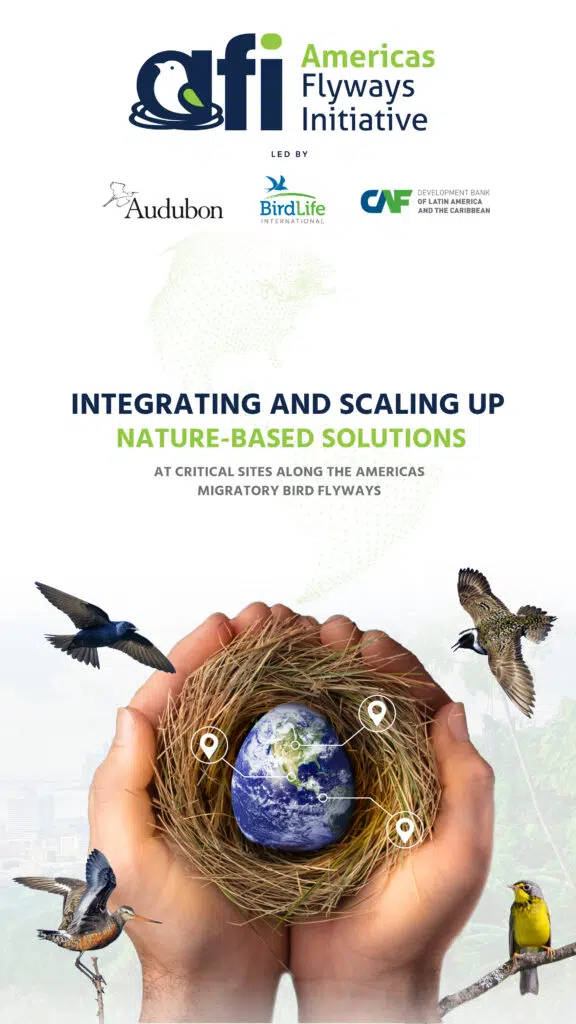
Why birds?
“If we conserve birds, we’ll resolve most of the world’s environmental problems.” Dr. Thomas Lovejoy, world-renowned ecologist, ‘Godfather of biodiversity’.
With their nearly global distribution and high sensitivity to environmental changes, birds are the best bioindicators and messengers that tell us about nature’s health. They are our early warning system, often leading us to the source of the problem and its solution. Birds tell us that our survival depends on a hemispheric solution to mitigate the effects of climate change and address the biodiversity loss crisis.
Birds act as guardians of life. By safeguarding them, we protect life. If birds do well, our planet does it too. The disappearance of single bird species can throw an ecosystem out of balance, creating a knock-on effect that threatens our survival. Severe population declines warn us about common future threats to biodiversity and people.
According to The Intergovernmental Panel on Climate Change (IPCC), limiting warming to around 1.5°C (2.7°F) requires global greenhouse gas emissions to be reduced by 43% by 2030. In parallel, one million species may be pushed to extinction in the next few years because of human pressures, as the UN has stated. This variety of living species makes up the safety net supporting human life on Earth, providing food, clean water, air, and energy, and building resilience to climate change impacts.
The birds lost are not just threatened or endangered migratory species but common and endemic birds. Massive biodiversity loss is at our doorstep. From more frequent and intense fires in California to the loss of snowpacks and glaciers in the Andes, severe droughts in Chile and Peru, an increase in the number and intensity of hurricanes in the Caribbean, and the ravaging growth of savannahs in the Amazon, communities, and people are already experiencing the devastating impacts of climate change and the destruction of nature.
Our collective scientific and innovative financing models will empower conservation actions linking breeding, stopover, and wintering sites and identify priority sites for birds overlaid with Important Bird Areas (IBA) and Key Biodiversity Areas (KBA). People-responsive solutions will range from agroforestry in rural agricultural areas to green infrastructure driving coastal resilience in urban cities.
We have seen the incredible connection birds can make and how they bring together people, communities, and efforts from a growing and wide variety of public, multilateral, and private organizations that understand the crucial moment biodiversity and the future of humanity are facing. For the first time in the Western Hemisphere, an initiative addresses systematic issues affecting migratory bird conservation.
AFI represents a genuine shift in the approach to sustainable development and biodiversity protection. By bringing in the necessary resources and technical know-how, we will respond to this pressing challenge. Together, we are building the roadmap that reverses the immense loss of birds and biodiversity in the hemisphere. AFI aims to inspire those who value the joy of local and migratory birds to bring back hope for the new generations.
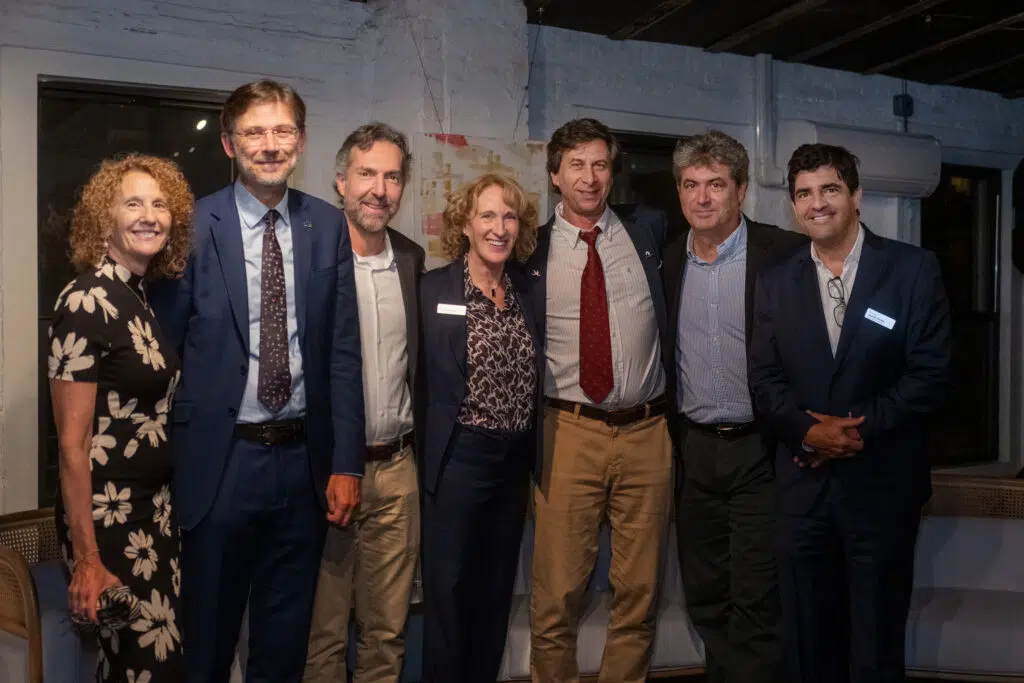
From left to right: Alicia Montalvo, Climate Action and Biodiversity Positive Manager, Development Bank of Latin America and the Caribbean – CAF, Martin Harper, CEO (Interim) BirdLife International, Pedro Develey, SAVE Brasil CEO, Elizabeth Gray, CEO, The National Audubon Society, Hernan Casanas, Aves Argentinas CEO, Ian Davidson, BirdLife International, Americas Director, and Aurelio Ramos, Audubon Americas Director.
Photo: Mike Fernandez, Audubon
